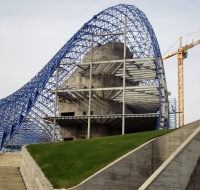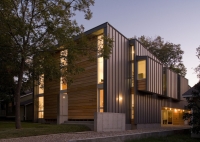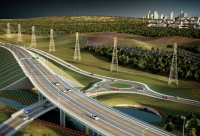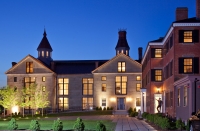The Fairfield House, designed by Webber + Studio, is located on a tree-lined street in the Austin, Texas, neighborhood of North Hyde Park. The Hyde Park Historic District is listed in the National Register of Historic places, and the area’s popularity has been growing in recent years due to its proximity to the University of Texas. In many respects, the 3,180 sq. ft. home, an Architectural Record House of the Month in 2009, draws upon the district’s rich architectural traditions, just as its neighbors do. In response to Texas’s hot, humid climate, for example, the house is separated into small building masses that are open to ventilation. A breezeway – another classic architectural element – connects the front and the back portions of the building, but that is where the nod to tradition ends. In every other aspect of its design, the Fairfield House is an exercise in modernism.










